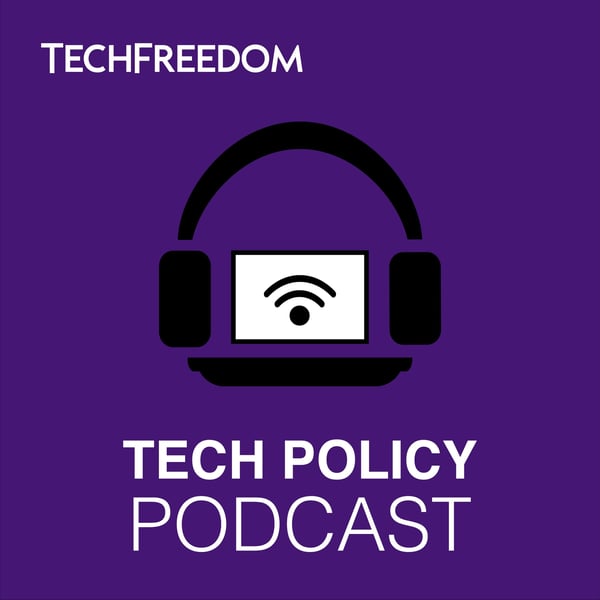#202: Artificial Intelligence
Tech Policy Podcast
TechFreedom
4.8 • 45 Ratings
🗓️ 30 October 2017
⏱️ 32 minutes
🧾️ Download transcript
Summary
Transcript
Click on a timestamp to play from that location
| 0:00.0 | Welcome to the tech policy podcast. I'm Evan Schwarger. On today's show, artificial intelligence, it's hard to believe we've done basically 200 episodes, and this is the first one where we're exploring this very exciting topic. And while artificial intelligence does have the potential to revolutionize our society in many ways and benefit people, increase productivity. There's clearly a lot of anxiety about potential job |
| 0:25.5 | loss and even the end of civilization as we know it, depending on who you ask. So we're going to |
| 0:29.8 | try to unpack this very complex and deep topic in 20 minutes, but of course we'll be doing |
| 0:35.1 | some follow-up episodes after this, as this will be a topic of |
| 0:38.7 | conversation for many, many years to come. |
| 0:41.1 | Joining me to discuss this is Elizabeth Clark Polner, director of artificial intelligence |
| 0:45.7 | at Symbolic, a industrial robotics company. |
| 0:49.0 | Thank you for having me. |
| 0:50.0 | And Hawaiian shirt enthusiast and tech freedom executive director, Austin Carson, is also |
| 0:53.7 | joining the show. |
| 0:54.3 | Austin, thanks for joining. |
| 0:55.4 | It feels really weird that I'm wearing a dress shirt right now, but I'm excited to be here. |
| 0:59.5 | All right. |
| 1:00.1 | So to start off, I mean, one of the big issues in this discussion is do we even agree on what the hell it is we're talking about? |
| 1:07.0 | It seems like depending on who you ask, the definitions are all over the map. |
| 1:10.5 | So let's just start out by defining what is AI. talking about. It seems like depending on who you ask, the definitions are all over the map. |
| 1:13.9 | So let's just start out by defining what is AI. |
| 1:20.3 | So people do use different definitions to refer to AI, but it's generally understood to be pattern recognition that's automated. So traditional big data, data science stipulates that you create a model. |
| 1:28.6 | You say, I think that this is the data that I have, and I think that this is how it should be put together in order to predict a response. |
| 1:35.3 | Humans do that pretty well, but we're biased. |
| 1:39.1 | And so AI tries to address those biases and says, all right, let's try all the different ways to combine the data that we have in order to make a prediction. Instead of you having to define a priori, |
| 1:48.2 | I think this is how the problem should be solved. It makes those decisions for you. |
... |
Please login to see the full transcript.
Disclaimer: The podcast and artwork embedded on this page are from TechFreedom, and are the property of its owner and not affiliated with or endorsed by Tapesearch.
Generated transcripts are the property of TechFreedom and are distributed freely under the Fair Use doctrine. Transcripts generated by Tapesearch are not guaranteed to be accurate.
Copyright © Tapesearch 2025.

